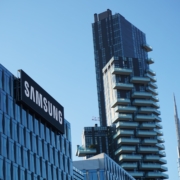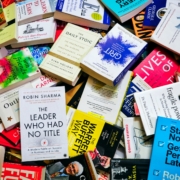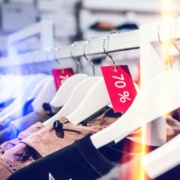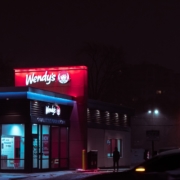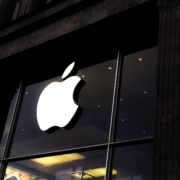Brand Leadership And The Courage To Commit
Many times, brand-businesses have insights about the future but do not find the courage to act on these insights. Lack of courage occurs for a number of reasons. Costs, fear of failure, complacency, the comfort of manufacturing what the business knows how to make rather than what solves customers’ problems, a chief of manufacturing who says, “Not on my line” or a siloed organization: all tend to collapse courage and get in the way of making things happen.
These brand-businesses do not have the will to do. So, something amazing passes through their systems causing lost chances, missed opportunities and the chance to get ahead of curve. Having the courage to commit to a vision or an insight is essential for brand-businesses, especially today in a fast-changing, volatile world. The courage to commit starts with brand leadership. Brand leadership is the key to action.
Brands thrive if leadership sees ahead and creates a plan for winning. Brands need to keep innovating in order to stay relevant. Brands need to keep in touch with their customers. Brands need leaders who love the core products and who want to make these better. But, brands also need leaders who can see ahead, adopt new ideas and act.
One of the criteria for great brand leadership is knowing the difference between being certain and being confident. Looking for certainty is a dead-end street. Brand leaders who seek certainty usually will not have the courage to act. Death and taxes are certain: all else are not. On the other hand, confidence is critical. A brand leader who is confident that an idea is worth investing in has the courage to bring the idea to fruition. Being able to say, ‘No, I am not certain this will work, but I am confident this is the right thing to do,” is a mark of a great brand leader.
Great brand leaders are authoritative, credible, responsible, trustworthy and they have integrity. When great brand leadership is lacking, brands suffer. Those seeking certainty will jettison ideas because there is no way of supporting a world of no doubt. There is no way of having absolute conviction that something is true if it has never yet happened. Great ideas die when the brand leader, presented with a new idea, asks, “Can you give me an example of who has done this before successfully?”
In the early 2000’s, an appliance company created a smart fridge. It was years ahead of the marketplace. This fridge would have the ability to communicate when foodstuffs were going bad; it would be able to order food stuffs that were running low; and it had a computer that allowed you to keep a meal calendar and create meal planning. The smart fridge would be hooked up to your home Internet system and become a communications hub for the family. The appliance company made one of these. This one-of-a-kind smart fridge was trucked around to various cities and company offices. But, the smart fridge never saw the light of day with consumers. Leadership was unsure and non-committal. Leadership wanted to continue to know more. Leadership was concerned more about failure of this product than the product’s success. No one could promise leadership the certainty of a win.
Today, smart fridges abound. Take the Samsung Hub concept. According to its website, Samsung Hub… “… with Alexa built-in, helps you stay connected to your family and home, whenever and wherever. Family Hub™ lets you control your Samsung smart appliances and devices, stream music, share pictures with your family, and so much more, all right from your fridge.” Samsung has always had leadership that respected innovation and accepted risk. As early as 2005, Samsung previewed a digital convergence fridge. It had a home organizer on the front door. This organizer had categories such as Food remember, Digital schedule and calendar, digital memo pad and digital radio.
Samsung’s early innovations in clothes washers and dryers, again from 2005, changed the way other manufacturers thought about these appliances. Samsung featured the Silver Nano Health System clothes washer. This feature used silver ions that melt in the water to get rid of germs and provide sterilization. The video on the Silver Nano indicated that the silver ions decomposed detritus to 1/1000th of a hair width, provided 99.99% sterilization and odor removal and removed irritants thus preventing atrophic dermatitis.
Ten years ago, in 2012, a hotel company had a plan for a net-zero, sustainable hotel. At the time, research indicated that a sustainable, responsible hotel would solve a problem for many travelers who expected products and services to reflect their personal values. The sustainable hotel’s concept was designed around the idea of innovating for responsible living. This hotel was to be a disrupter: a building that would be green from top to bottom. Partners with expertise in specific areas of sustainability and technology were signed; the specific location was identified and the land owner was eager for discussions to start. The innovation hotel would also be a pipeline for the company’s other branded hotels as new ideas could be tested, measured and managed in real-time with winning ideas transferred within the company’s system. Data showed that this sustainable hotel would be a profitable entity for the company, especially when it came to the key hotel-industry metric of RevPar, revenue per available room.
A team worked on the strategy and planned for months. Money was spent, presentations were delivered. And then, nothing… shelved with all the other what ifs. It was the hotel that never happened. At least not at this company. Leadership was worried about short-term investment rather than the long-term profitability of the innovation. Leadership wanted certainty that this sustainable hotel would succeed.
Now, as reported in The New York Times, there are many hotels with the same sustainability concept that are actually being built or have been built, receiving guests. Leadership at these hotels are willing to commit to the greater good. As in 2012, once again new research states travelers commitment to eco-consciousness when it comes to the actual hotel. In a Booking.com survey, 71% of respondents say they plan to travel greener. And, more than 50% of the respondents indicate that they “are determined” to make greener travel choices. The New York Times states that these hospitality options are way beyond the ditching of tiny plastic shampoo bottles and asking guests to reuse their towels. These hotels are focusing on the entire building. These hotels are focused on environmental efficiency and effectiveness, from solar panels to zero waste.
When Boards of Directors, investors and analysts see the present and the future, and if they believe in ing strong, resilient, authoritative, trustworthy brand-businesses that will continue to generate enduring profitable growth, great leaders must be in place to make these insights realities.
Great brand leadership takes courage. Great brand leadership requires a will to do based on confidence. Great brand leaders know what they do not know and exercise informed judgment. Great brand leaders weigh informed action against inaction: they balance the need to know with certainty against the necessity for a confident decision. Great brand leaders take risks; they take leaps of faith based on informed judgment: they have confidence that these are leaps in the right direction.

